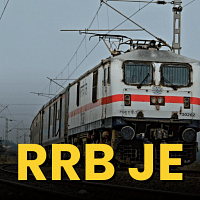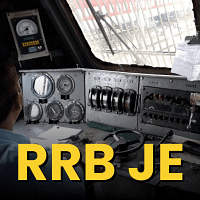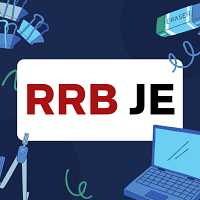Railways Exam > Railways Questions > In resistance welding, the pressure is relea...
Start Learning for Free
In resistance welding, the pressure is released
- a)just at the time of passing the current
- b)after completion of current
- c)after the weld cools
- d)during the heating period.
Correct answer is option 'C'. Can you explain this answer?
| FREE This question is part of | Download PDF Attempt this Test |
Verified Answer
In resistance welding, the pressure is releaseda)just at the time of ...
In resistance welding, the joining of two sheets is accomplished by heating by passing current through electrodes and after the current is switched off, the pressure is applied to coalesce the two sheets and pressure is released only after the weld (nugget) solidifies.
View all questions of this test
Most Upvoted Answer
In resistance welding, the pressure is releaseda)just at the time of ...
Pressure release in resistance welding
In resistance welding, the pressure is released after the weld cools down. This is done to ensure the quality and integrity of the weld joint. Let's understand why this is the correct answer in detail.
Resistance welding overview
Resistance welding is a process used to join metal pieces together by applying heat and pressure. The heat is generated by passing an electric current through the metal pieces, which creates resistance and raises the temperature at the contact points. The pressure is applied to ensure proper contact and to hold the pieces together during the welding process.
Importance of pressure release
Releasing the pressure after the weld cools down is crucial for several reasons:
1. Prevention of distortion: During the welding process, the metal pieces heat up and expand. The applied pressure helps in maintaining proper alignment and preventing distortion of the joint. However, if the pressure is released too early while the metal is still hot, it can lead to distortion and misalignment of the welded joint.
2. Avoidance of cracks: The cooling process is essential for the formation of a strong and durable weld. When the weld cools down, the metal contracts, and the joint solidifies. Releasing the pressure before the cooling is complete can result in premature solidification and the formation of cracks in the weld.
3. Improvement of weld strength: Allowing the weld to cool down completely before releasing the pressure ensures that the joint achieves maximum strength. If the pressure is released too early, the joint may not have sufficient time to solidify properly, leading to a weaker and less reliable weld.
4. Enhancement of weld appearance: Releasing the pressure after the weld cools down also helps in improving its appearance. The cooling process allows any excess material or flash to solidify and become easier to remove, resulting in a cleaner and more visually appealing weld.
Conclusion
In resistance welding, releasing the pressure after the weld cools down is the correct approach. It helps in preventing distortion, avoiding cracks, improving weld strength, and enhancing the appearance of the weld joint. By following this practice, the weld quality and integrity can be ensured, resulting in strong and reliable joints.
In resistance welding, the pressure is released after the weld cools down. This is done to ensure the quality and integrity of the weld joint. Let's understand why this is the correct answer in detail.
Resistance welding overview
Resistance welding is a process used to join metal pieces together by applying heat and pressure. The heat is generated by passing an electric current through the metal pieces, which creates resistance and raises the temperature at the contact points. The pressure is applied to ensure proper contact and to hold the pieces together during the welding process.
Importance of pressure release
Releasing the pressure after the weld cools down is crucial for several reasons:
1. Prevention of distortion: During the welding process, the metal pieces heat up and expand. The applied pressure helps in maintaining proper alignment and preventing distortion of the joint. However, if the pressure is released too early while the metal is still hot, it can lead to distortion and misalignment of the welded joint.
2. Avoidance of cracks: The cooling process is essential for the formation of a strong and durable weld. When the weld cools down, the metal contracts, and the joint solidifies. Releasing the pressure before the cooling is complete can result in premature solidification and the formation of cracks in the weld.
3. Improvement of weld strength: Allowing the weld to cool down completely before releasing the pressure ensures that the joint achieves maximum strength. If the pressure is released too early, the joint may not have sufficient time to solidify properly, leading to a weaker and less reliable weld.
4. Enhancement of weld appearance: Releasing the pressure after the weld cools down also helps in improving its appearance. The cooling process allows any excess material or flash to solidify and become easier to remove, resulting in a cleaner and more visually appealing weld.
Conclusion
In resistance welding, releasing the pressure after the weld cools down is the correct approach. It helps in preventing distortion, avoiding cracks, improving weld strength, and enhancing the appearance of the weld joint. By following this practice, the weld quality and integrity can be ensured, resulting in strong and reliable joints.
Attention Railways Students!
To make sure you are not studying endlessly, EduRev has designed Railways study material, with Structured Courses, Videos, & Test Series. Plus get personalized analysis, doubt solving and improvement plans to achieve a great score in Railways.

|
Explore Courses for Railways exam
|

|
Similar Railways Doubts
In resistance welding, the pressure is releaseda)just at the time of passing the currentb)after completion of currentc)after the weld coolsd)during the heating period.Correct answer is option 'C'. Can you explain this answer?
Question Description
In resistance welding, the pressure is releaseda)just at the time of passing the currentb)after completion of currentc)after the weld coolsd)during the heating period.Correct answer is option 'C'. Can you explain this answer? for Railways 2024 is part of Railways preparation. The Question and answers have been prepared according to the Railways exam syllabus. Information about In resistance welding, the pressure is releaseda)just at the time of passing the currentb)after completion of currentc)after the weld coolsd)during the heating period.Correct answer is option 'C'. Can you explain this answer? covers all topics & solutions for Railways 2024 Exam. Find important definitions, questions, meanings, examples, exercises and tests below for In resistance welding, the pressure is releaseda)just at the time of passing the currentb)after completion of currentc)after the weld coolsd)during the heating period.Correct answer is option 'C'. Can you explain this answer?.
In resistance welding, the pressure is releaseda)just at the time of passing the currentb)after completion of currentc)after the weld coolsd)during the heating period.Correct answer is option 'C'. Can you explain this answer? for Railways 2024 is part of Railways preparation. The Question and answers have been prepared according to the Railways exam syllabus. Information about In resistance welding, the pressure is releaseda)just at the time of passing the currentb)after completion of currentc)after the weld coolsd)during the heating period.Correct answer is option 'C'. Can you explain this answer? covers all topics & solutions for Railways 2024 Exam. Find important definitions, questions, meanings, examples, exercises and tests below for In resistance welding, the pressure is releaseda)just at the time of passing the currentb)after completion of currentc)after the weld coolsd)during the heating period.Correct answer is option 'C'. Can you explain this answer?.
Solutions for In resistance welding, the pressure is releaseda)just at the time of passing the currentb)after completion of currentc)after the weld coolsd)during the heating period.Correct answer is option 'C'. Can you explain this answer? in English & in Hindi are available as part of our courses for Railways.
Download more important topics, notes, lectures and mock test series for Railways Exam by signing up for free.
Here you can find the meaning of In resistance welding, the pressure is releaseda)just at the time of passing the currentb)after completion of currentc)after the weld coolsd)during the heating period.Correct answer is option 'C'. Can you explain this answer? defined & explained in the simplest way possible. Besides giving the explanation of
In resistance welding, the pressure is releaseda)just at the time of passing the currentb)after completion of currentc)after the weld coolsd)during the heating period.Correct answer is option 'C'. Can you explain this answer?, a detailed solution for In resistance welding, the pressure is releaseda)just at the time of passing the currentb)after completion of currentc)after the weld coolsd)during the heating period.Correct answer is option 'C'. Can you explain this answer? has been provided alongside types of In resistance welding, the pressure is releaseda)just at the time of passing the currentb)after completion of currentc)after the weld coolsd)during the heating period.Correct answer is option 'C'. Can you explain this answer? theory, EduRev gives you an
ample number of questions to practice In resistance welding, the pressure is releaseda)just at the time of passing the currentb)after completion of currentc)after the weld coolsd)during the heating period.Correct answer is option 'C'. Can you explain this answer? tests, examples and also practice Railways tests.

|
Explore Courses for Railways exam
|

|
Suggested Free Tests
Signup for Free!
Signup to see your scores go up within 7 days! Learn & Practice with 1000+ FREE Notes, Videos & Tests.
























